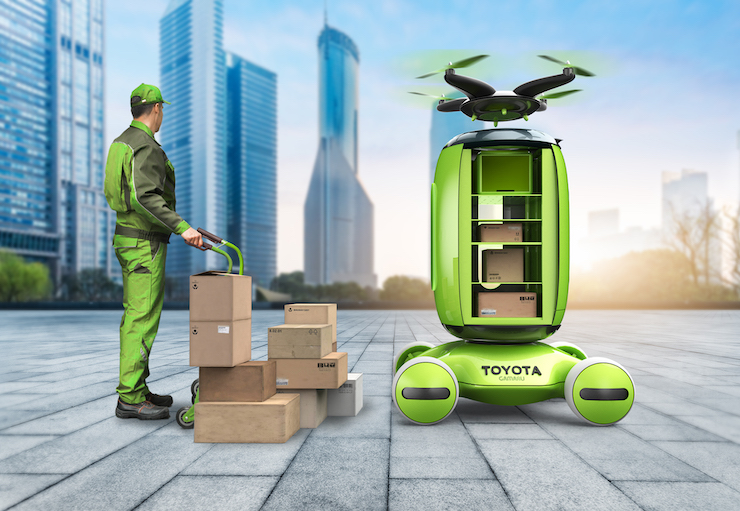Toyota’s Designer, Eddie Mauro, Creates Mailbox Drone Delivery System Called “Gamaru”

Eddie Mauro™
When most people hear the name Toyota, they automatically think of cars. Since Kiichiro Toyoda branched off from his father’s Toyota Industries in 1937 to build Toyota Automotive, Toyota has become the largest car manufacturer in the world. Part of the Toyota brand’s success comes from diversifying their interests into technology based ventures outside of the automotive industry. Not long ago, Toyota “recognized that changing dynamics in global material handling markets relating to e-commerce, labor cost and productivity requirements, have created a permanent demand for new forms of logistics solutions,” as stated on their logistics website. In response, they established the Toyota Advanced Logistics Group (TAL) to manage supply chain solutions.
For the last few years, TAL has been hosting the Toyota Logistic Engineering Challenge to encourage advancement for logistical problems. The 2018 winner was Edgar Sarmiento García with a design for a smart mailbox system. The concept combines the idea of an autonomous mobile mailbox drone hub called Gamaru. Online shopping and shipping have been steadily increasing over the years. This past year, in response to the constraints of a worldwide pandemic, more people than ever before have been shopping online. Delivery logistics are overwhelmed with fulfilling orders, a problem that Gamaru aims to fix.
Edgar, who goes by the name Eddie Mauro, is a Colombian-Italian-Brazilian engineer that specializes in transportation designs. He has won many awards for his innovative mobility designs, including the Michelin Challenge Design and Berlin Urban Mobility Challenge. But his design for the Toyota challenge may be his first brought into mass production. Gamaru will be more than a drone mail hub, it will be an entirely new logistical delivery system. It is made up of three sections: a fully autonomous mobility base, a large storage tower, and a drone.
The base serves as a large platform on wheels that the tower locks into. The base can be programmed with GPS coordinates that relate to specific locations within a logistics warehouse or an urban community. The tower is a compartment large enough to hold several packages. It is sturdy, yet lightweight to make it easy to handle, and can even support being stacked with multiple towers. Once filled in a warehouse, Gamaru’s base transports it to a delivery truck. The truck then brings Gamaru to a central location, drops it off, and the base transports the tower to designated pickup locations. Based on the packages meant to be delivered, Gamaru will choose a location that is equally distanced from the intended recipients. For smaller packages, the drone connected to the top of the tower will deliver directly to a customer’s home.
The drone sits on top of the tower and has special connectors on its undercarriage. These connectors adhere to a specially designed container that holds the smaller packages to be delivered. Once the container and the drone are connected, it creates a secure link between the drone and the tower. When Gamaru reaches its delivery station, the drone autonomously flies off then returns to the tower. While in the warehouse, the drone can be used to retrieve packages to be placed in the Gamaru tower. For safety, the drone has 4 cameras and sensors to give it spatial awareness. The rotors are also encased to prevent any injuries.
The entire system is operated through an app. The app has different applications for distribution warehouses and customers. While some may argue that a system like Gamaru will take away jobs, it actually has the opposite effect. The creation of Gamaru and its subsequent warehouses will create hundreds of job positions. Once in operation, Gamaru will be a tool to help ease and expedite the massive logistical undertaking of snail mail. People will still be needed to oversee Gamaru, but now, they will have a chance to get packages to their final destinations in a timely and organized manner.
|